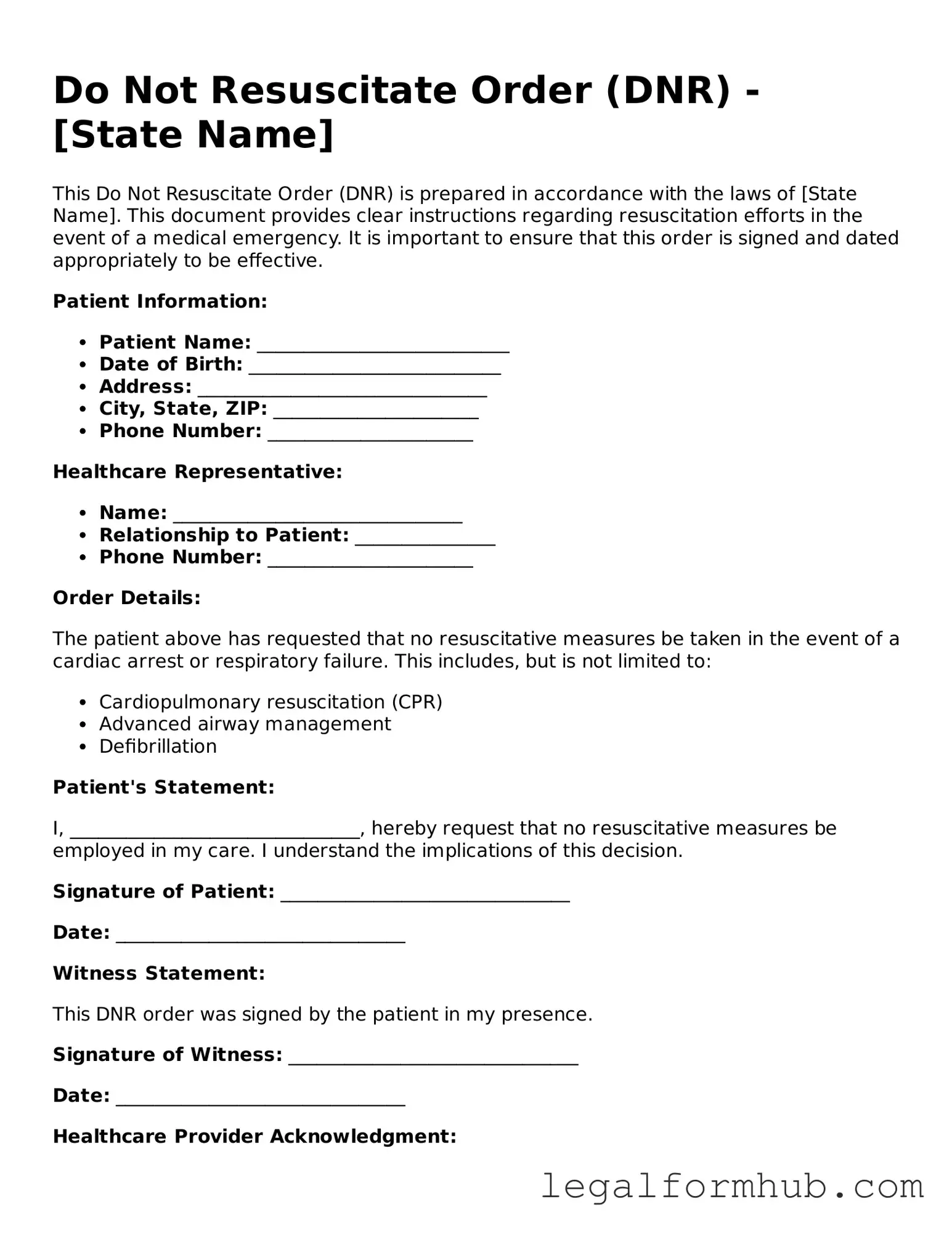A Living Will is a legal document that allows individuals to outline their preferences regarding medical treatment in the event they become unable to communicate their wishes. Like a Do Not Resuscitate Order (DNR), a Living Will typically specifies the types of medical interventions a person does or does not want, particularly in situations where they are terminally ill or in a persistent vegetative state. Both documents serve to ensure that a person’s healthcare choices are respected, even when they cannot speak for themselves.
A Healthcare Power of Attorney (POA) designates an individual to make medical decisions on behalf of another person when they are incapacitated. Similar to a DNR, a Healthcare POA ensures that an individual's healthcare preferences are honored. While a DNR specifically addresses resuscitation efforts, a Healthcare POA can encompass a broader range of medical decisions, including the acceptance or refusal of various treatments.
A Physician Orders for Life-Sustaining Treatment (POLST) form is a medical order that outlines a patient's preferences for end-of-life care. It is similar to a DNR in that it provides specific instructions regarding resuscitation and other life-sustaining treatments. The POLST form is designed for individuals with serious health conditions and is intended to be more comprehensive than a DNR, covering various treatment options beyond just resuscitation.
An Advance Directive is a legal document that combines elements of both a Living Will and a Healthcare Power of Attorney. It allows individuals to express their healthcare preferences and appoint someone to make decisions on their behalf. Like a DNR, an Advance Directive is crucial for ensuring that a person's wishes regarding medical treatment are followed, particularly in emergency situations.
An organ donation card or registry is a document that indicates a person's wishes regarding organ donation after death. While not directly related to resuscitation, it is similar to a DNR in that both documents reflect a person's preferences about medical interventions. A DNR indicates a desire to forgo resuscitation efforts, while an organ donation card expresses a willingness to donate organs, highlighting the individual's choices concerning their body after death.
A Do Not Intubate (DNI) order is similar to a DNR in that it specifically addresses the use of intubation, a procedure often used during resuscitation. A DNI indicates that a patient does not wish to have a breathing tube inserted if they are unable to breathe on their own. Both documents are critical for ensuring that medical staff understand and respect a patient's wishes regarding life-sustaining measures.
The Employment Verification Form is essential for confirming an individual's work history, job title, and salary with previous employers, thereby aiding prospective employers in making informed hiring decisions. To facilitate this process, you can easily complete the needed documentation by following the link here: Fill PDF Forms.
A Medical Treatment Plan is a document created by healthcare providers that outlines the proposed course of treatment for a patient. While it is not a legal document like a DNR, it can include discussions about resuscitation preferences. Both documents serve to clarify the patient's medical care, ensuring that healthcare providers are aware of the patient's wishes and can provide care accordingly.
